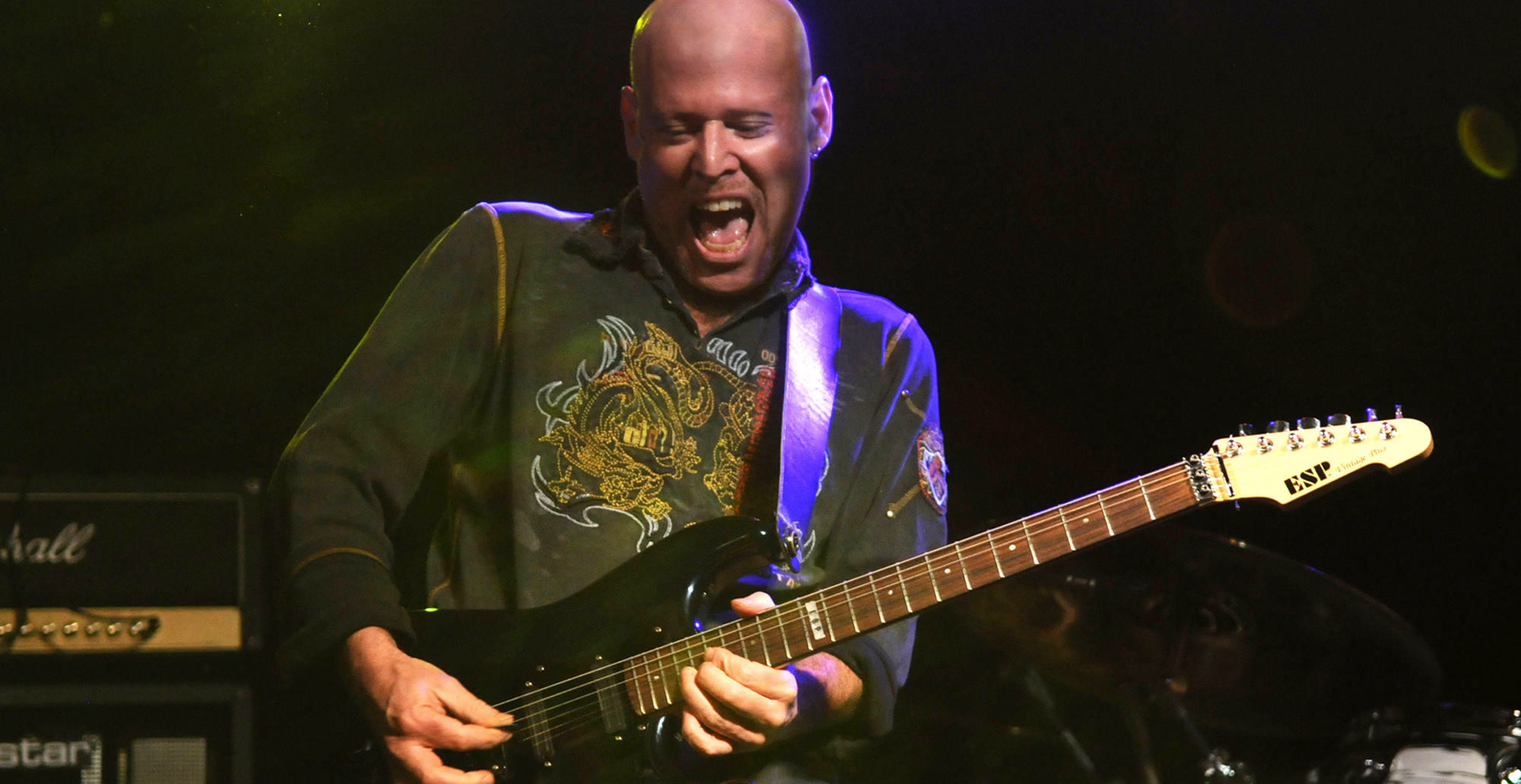Anastasia by Slash
"Anastasia" by Slash is a modern rock classic, filled with a blend of technical mastery and melodic expression that guitarists of all skill levels will find challenging and rewarding. This guitar lesson offers a note-for-note breakdown of the song, allowing players to dive into the powerful techniques and signature licks that make Slash’s playing so iconic. The lesson is designed not only to teach you how to play the song but also to develop your technical abilities across a wide array of techniques found in the song. Danny Gill breaks down this modern rock classic in this exclusive Lick Library video tutorial.
Slash’s Influence in "Anastasia"
Slash, known for his expressive playing and soulful leads, brings his signature style to "Anastasia," blending elements of classic rock, blues, and metal into one powerful composition. As the lead guitarist of Guns N' Roses and Velvet Revolver, Slash's influence on rock guitarists is immense, and his work on "Anastasia" showcases his technical prowess and emotional depth. The song also features elements of classical guitar, adding an extra layer of complexity to his riffing and soloing style. Guitarists who study Slash's playing in this song will gain a deep understanding of how to blend technique with emotion, making every note count.
Key Techniques in the "Anastasia" Lesson
1. Alternate Picking
Alternate picking is one of the foundational techniques used throughout "Anastasia." The rapid passages in the song’s intro and many of the solo sections require precise alternate picking to execute clean, articulate notes at high speed. This technique helps guitarists improve their picking hand speed and accuracy, which is essential for playing complex riffs and solos.
2. Legato
Slash often uses legato techniques such as hammer-ons and pull-offs to create smooth, flowing lines in his solos. In "Anastasia," legato is heavily featured in the solos to add fluidity and speed to his phrasing. This technique allows for quicker transitions between notes, making it ideal for faster runs and creating a seamless, connected sound.
3. Pinched Harmonics
Slash utilizes pinched harmonics to add aggressive, high-pitched squeals to his solos. These harmonic tones cut through the mix and add a layer of excitement and intensity to the playing. Mastering pinched harmonics can help guitarists add extra flair and dynamics to their lead playing.
4. Vibrato
Vibrato is one of the key expressive tools in Slash's playing, and in "Anastasia," it’s no exception. Vibrato involves oscillating the pitch of a note by bending the string slightly, giving the note a "singing" quality. This technique adds emotion and depth to notes, allowing guitarists to convey a more vocal-like sound.
5. String Bending
Slash’s use of string bending, particularly in the solo sections, is integral to his expressive style. String bending allows you to "reach" notes that aren’t on the fretboard by bending the string to change the pitch. Learning how to control bends can dramatically improve a guitarist's ability to play more emotionally charged solos.
6. Slides
Throughout "Anastasia," Slash uses slides to transition smoothly between different notes and positions on the fretboard. Slides add a fluid, gliding quality to the playing and can be used to seamlessly connect different parts of a solo or riff. This technique helps guitarists improve their transitions across the neck.
7. Power Chords
The rhythm section of "Anastasia" is built on driving power chords, which are essential for creating the heavy, rocking sound of the track. Power chords provide a solid foundation for the song and allow players to focus on their rhythm playing and chord transitions.
8. Palm Muting
Slash uses palm muting throughout the track to add rhythmic precision and texture, particularly in the heavier parts of the song. By lightly resting the picking hand on the strings near the bridge, palm muting creates a muted, percussive sound. This technique is crucial for controlling dynamics and adding variation to your playing.
9. Arpeggios
The classical-inspired intro to "Anastasia" features arpeggiated chord progressions, which Slash plays with precision and finesse. Learning to play arpeggios will improve your ability to break down chords into individual notes, which can be particularly useful for creating melodic lines and intricate riffs.
10. Hammer-Ons and Pull-Offs
The solos in "Anastasia" heavily feature hammer-ons and pull-offs, two key legato techniques that allow for smoother, faster note transitions. These techniques reduce the reliance on picking every note and are essential for creating fluid, flowing lines.
Why Learning These Techniques is Important
Each of these techniques, when mastered, will significantly enhance your overall guitar playing ability. Alternate picking and palm muting will give you the control and precision needed to tackle more rhythmically complex passages. Techniques like vibrato, string bending, and legato will improve your lead playing, making your solos more dynamic and expressive. Meanwhile, power chords, slides, and arpeggios will help round out your rhythm guitar playing, enabling you to create both heavy and melodic textures in your own compositions. By learning the techniques in "Anastasia," guitarists not only learn to play an incredible song but also gain a deeper understanding of guitar playing as a whole.
Guitar Techniques Featured in This Lesson:
- Vibrato
- Alternate Picking
- Legato
- Pinched Harmonics
- Hammer-Ons
- Pull-Offs
- String Bending
- Slides
- Power Chords
- Palm Muting
- Arpeggios
List of Guitar Techniques Used
This guide, rich with expert tips and detailed instructional content, ensures that each student can achieve mastery over the song and a deeper understanding of their instrument. Explore the depths of your guitar potential with LickLibrary.com’s comprehensive lessons.

About The Tutor
Tutor Profile
Danny Gill
Danny Gill is, without a doubt, the most loved tutor by our community. With an incredible array of DVDs and web lessons for LickLibrary covering a wide variety of topics all of which he covers with incredible detail, it's no wonder he carries as much respect as he does. As...



